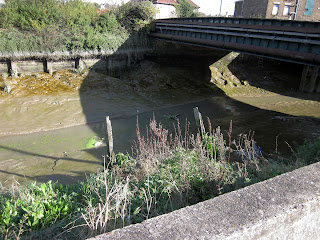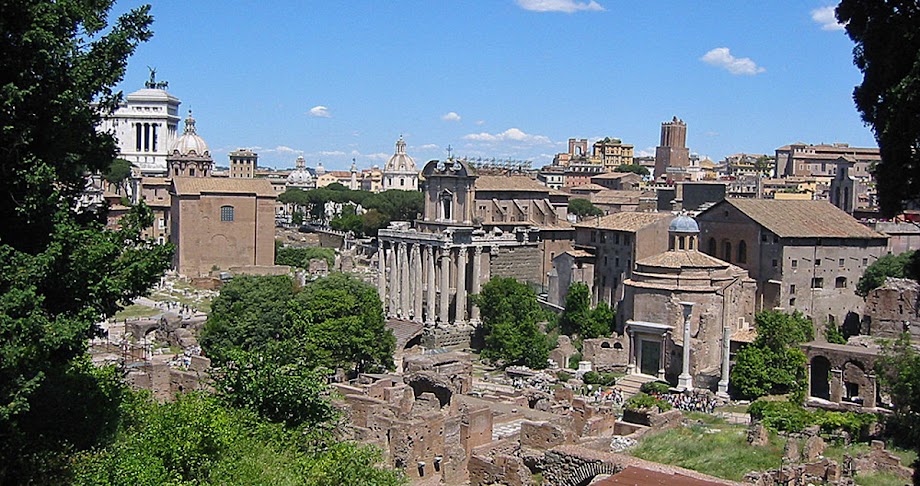 |
| Colchester Castle, built on the Temple to Claudius |
 |
| Boudica in her chariot, Big Ben in the background |
 |
| A portion of the Roman Wall in Colchester's Castle Park |
 |
| The River Colne |
Jumping forward to the Stuart era, the town found itself caught between the king and parliament. A royalist army took it in 1648 and parliamentary forces conducted a siege that lasted eleven weeks and was responsible for hundreds of deaths among the citizens of Colchester. At the end of the siege two royalists were executed by firing squad. There is a marker in the Castle Park remembering their deaths.
 |
| Castle Park in autumn |
More pleasant was Castle Park, a sprawling area of green which was in very active use on this unusually sunny and warm day in late October. A good bit of Roman wall aand also the River Colne run through the park, there is also a little cafe, a duck pond, and so on. It's a beautiful place for a stroll, a picnic, or just a place to relax in contemplation of the loveliness of Essex.
| The High Street |
 |
| Pedestrian zone in Colchester |
It's a pretty place and has a large outdoor section, where I enjoyed a pint and a ploughman's lunch. A ploughman's usually consists of some ham, some cheese, some greens, pickles, pickled onions, and chutney. Mine was a ploughman's of some size:
Indeed there was so much ham and cheese that I took half of it away, with me. For those of you interested in such stuff, the pint was a good, common London ale, called Bombardier.
After lunch I embarked on the one slight disappointment of my day in Colchester. I had read about an art walk called, Town to Sea, where 14 sculptures along the way adorned a walk down the river. It was a fine idea in theory, but the art was not all that interesting, and walk took me to some pretty miserable looking parts of Colchester and the River Colne.
 |
| Town to Sea walk: The art |
 |
| Town to Sea walk: The river |
Oh! I almost forgot what showed me beyond question that Colchester was a classy place and well worth the visit. A shop named:
What fine taste!






No comments:
Post a Comment